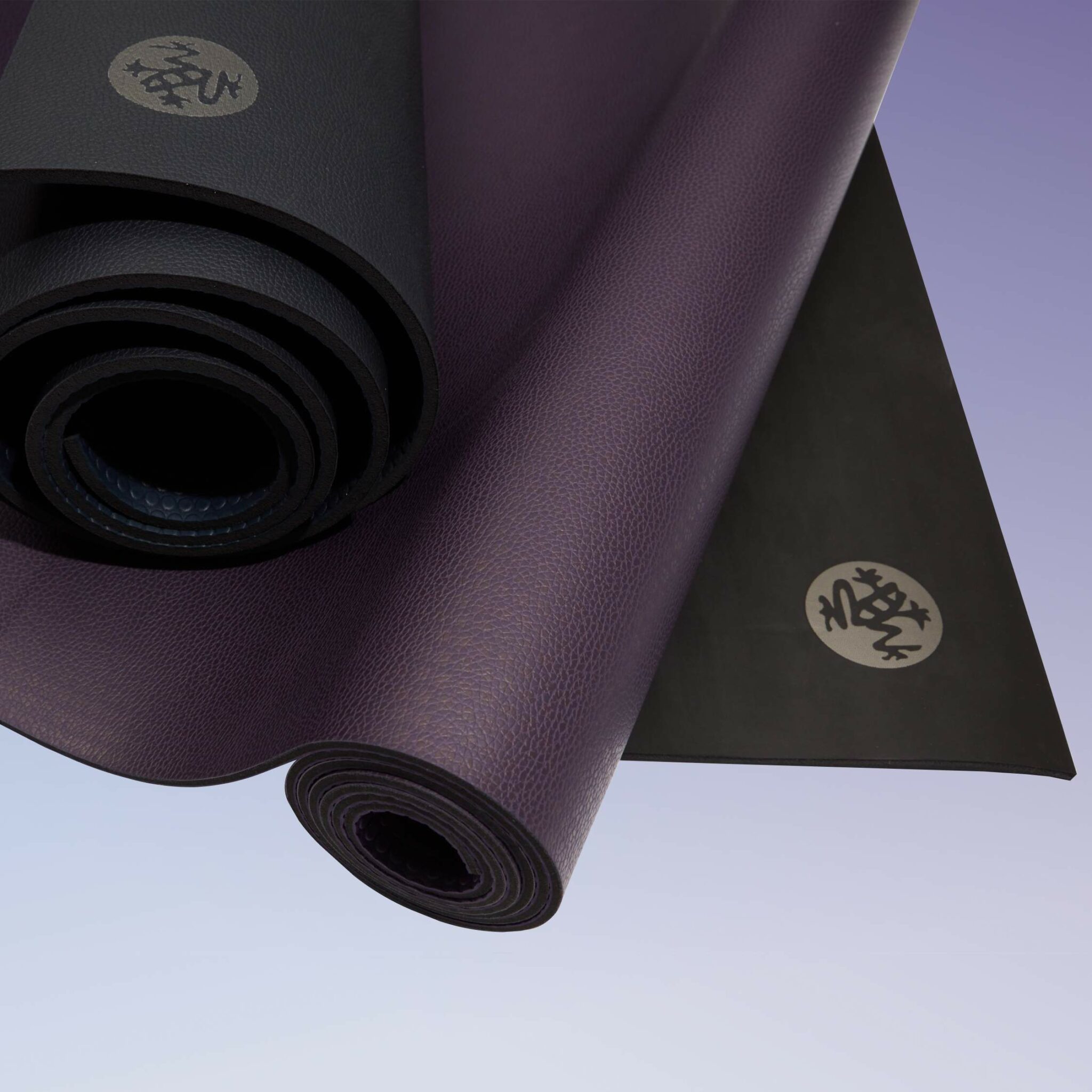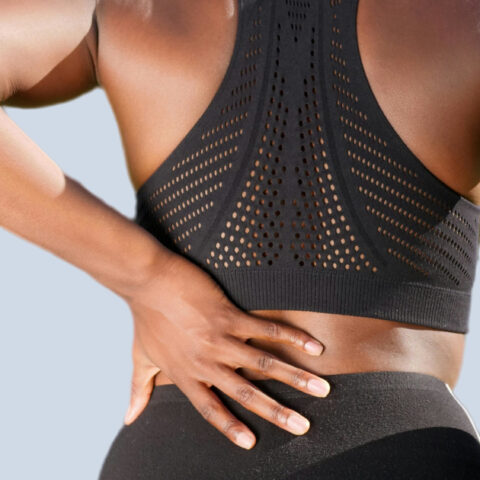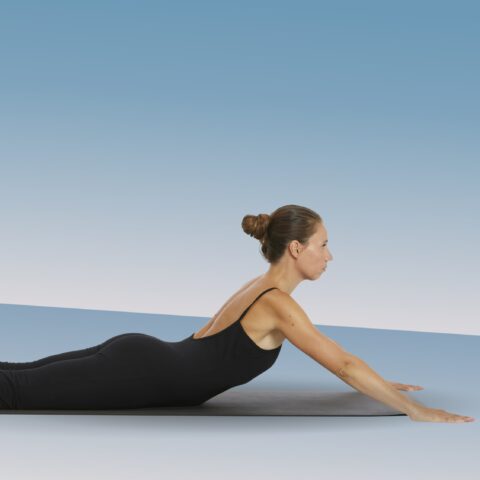Yoga and Pilates mats might look similar. However, each mat has its own unique features. Keep in mind that these features are tailored to the movements of either a yoga or Pilates practice.
Table of contents
Your choice will impact your comfort and stability as you move. We’ll explore the differences together to find which choice is right for you.
Key takeaways
- Pilates and yoga mats are made differently. They support the unique movements of each practice.
- A Pilates mat is thicker (6-15 mm or 0,24-0,59 inches) for cushioning, while a yoga mat is thinner (4-6 mm or 0,16-0,24 inches) for balance and stability.
- Picking the right mat can improve how well and how comfortable you can do your exercises.
The difference between yoga and Pilates workouts
Pilates and yoga stand out in the world of popular mind-body practices.
They both enhance flexibility, strength, and mental clarity. They both help to maintain an active lifestyle. However, the distinct difference between these two practices is their approach.
Yoga
Yoga is an ancient Indian discipline that focuses on the harmony between mind, body, and spirit. It’s a practice that often involves holding poses or seamlessly transitioning through movements. This requires balance, stability, and endurance. Yoga mats are designed with this in mind and often have a stable, grippy surface.
Pilates
Pilates, however, focuses on precise movements that build strength and endurance. It places attention on engaging the core and keeping the spine and pelvis aligned.
The movements in Pilates need a mat that offers more cushioning. Thicker mats help support the spine and provide comfort during the workout. This is important since certain exercises are done lying down.
Choosing which exercise mat you want to use will come down to the specific needs of your chosen practice. The material, texture, and thickness of your Pilates or Yoga mat will all affect your ability to move well. Be sure to align your choice of mats with your practice.
Comparing yoga mats and Pilates mats
Selecting the right workout mat for your exercise routine is important. Be sure you understand the differences between yoga mats and Pilates mats.
Thickness
- Pilates generally uses a thicker mat (6-15 mm or 0,24-0,59 inches). They provide the cushioning to protect the joints and vertebrae.
- Yoga mats are often thinner. They offer more stability for balancing and standing poses.
Material
- Pilates mats are usually made of closed-cell foam or high-density rubber. These materials offer extra cushioning.
- Yoga mats tend to be made with earth-friendly products that offer better grip. This can be natural rubber, PVC foam, cork, or recycled rubber. All products that allow for an excellent grip and a non-slip surface.
Support
- Pilates mats will feel soft to provide support for the spine and joints. However, balancing on this softer surface will be more difficult.
- A standard yoga mat will provide less support for your joints but more support for your balance.
Key considerations
- Choose your mat based on your preferred workout type. If you do both yoga and Pilates, you might consider investing in both mats.
- If you can only choose one mat, choose a dense yoga mat. This way, you can do several exercises from both practices.
- Consider eco-friendly options if sustainability is a priority for you.
- Consider the quality of your mat. Not all mats are equal.
When choosing exercise mats, pick the one that best supports your practice.
How a Pilates mat supports a Pilates practice
Pilates works to enhance core and overall strength. It also helps to improve posture, flexibility, and body awareness. This is all done through different variations of slow, controlled movements designed by Joseph Pilates.
Pilates mats provide the necessary base for all of these focuses.
The importance of thickness and density
A thicker mat is crucial for an effective and supportive Pilates routine.
Movements are typically done on the hands and knees or on the back for many repetitions. This is why you would want something comfortable and easy on the joints.
Pilates exercise mats generally offer:
- More padding: This is beneficial for sensitive knees and backs during floor workouts. It’s also necessary for those who might be practicing as physical rehabilitation.
- Enhanced density: A dense mat protects your joints by absorbing impact. It also provides a stable surface. This is important for balance and control in exercises like the Teaser and Roll Up.
Pilates mats are about 6-15 mm (0,24-0,59 inches) thick. They provide comfort without losing stability.
Material and texture for Pilates movements
Material and texture also play a significant role. These features ensure:
- Non-slip texture: A grippy mat helps maintain positions without slipping. This is essential for precision in exercises and safety.
- Durable material: Exercise mat material should be resistant to wear and tear from repetitive movement.
A Pilates workout mat can also be used for resistance exercise or weight training. This is often why these exercise mats are included in gyms for different floor exercises.
How a yoga mat supports a yoga practice
Yoga is a practice that expands your physical, emotional, and spiritual health. It improves flexibility and strength. It creates a balanced body and mind.
All of this work is done through poses, breathwork, and meditation. A good yoga mat is not just an important tool for your practice. Many practitioners view it as a sacred space.
The importance of stability
Stability is crucial for a yoga mat. It should prevent slipping for your safety when you practice. This is especially important while you hold a pose or transition through poses.
Standard yoga mats offer:
- More stability: A thin mat of 4 mm (0,16 inches) offers the stability required in yoga poses.
- Better grip: Non-slip materials allow you to transition between many yoga poses safely.
- Sweat absorption: Yoga mats designed to absorb sweat and maintain grip even as you sweat. This can enhance your stability in your poses. Especially in Vinyasa and Hot Yoga classes.
Cushioning and quality for your daily routine
Yoga mats should be thinner than their Pilates counterpart. However, they should still provide some cushioning. This will also protect the joints and allow for soft landings in poses.
A quality mat will not be so thin that you can feel the wooden floor underneath. These features ensure:
- Physical health: Adequate cushioning reduces impact and prevents injuries.
- Support: Mats should hold your body weight. This happens during physical activity, like holding or moving through poses.
- Deep focus: A comfortable mat allows you to relax for the meditative portion of your practice.
Remember, a quality mat can profoundly enrich your yoga practice.
Making the right choice
Consider what physical activities you will be doing when choosing your mat. Both yoga mats and Pilates mats will support floor exercises. However, they are designed with different features specific to each practice.
The main differences between yoga and Pilates mats are:
- density
- non-slip features
- sweat absorption
- materials they are made of
The best mat for Pilates should offer cushioning for rolls and spine exercises. This cushioning will also help those with sensitive knees. It will also help those who need extra support.
The best yoga mat should provide a non-slip surface and excellent grip for stability. This will come in handy during challenging poses or as you flow through sequences.
Yoga mats also tend to be made from eco-friendly materials like natural rubber or cork. This may be an important factor if you are hoping to connect your individual consciousness practice to universal consciousness through your choice.
Conclusion
The type of mat you use matters. Decide what type of workouts you will use your mat for and notice how it makes a difference.
Frequently asked questions
Can I use the same mat for yoga and Pilates?
You can use the same mat for yoga and Pilates. Keep in mind that Pilates mats are usually thicker to protect your joints.
Why are Pilates mats thicker than yoga mats?
Pilates mats are thicker to provide more padding and support during Pilates exercises. Yoga mats are often thinner since yoga poses don’t need as much cushioning.
What thickness mat is best for Pilates?
The best thickness for a Pilates mat is generally 6 mm (0,24 inches) or thicker. This thickness provides enough cushioning for the spine during Pilates. Thinner mats can compress the spine too much.
Can I use a Pilates mat for yoga?
You can use a Pilates mat for yoga, but a yoga-specific mat may provide better grip. Pilates mats work for yoga since they are padded, but they may be more slippery than a textured yoga mat. Yoga requires more grip.







